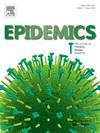利用基于 pDyn 的代理模型预测波兰的 SARS-CoV-2 流行动态。
IF 2.4
3区 医学
Q2 INFECTIOUS DISEASES
引用次数: 0
摘要
我们采用基于代理的流行病学模型 pDyn(源于 "大流行病动力学")来预测 SARS-CoV-2 在波兰社会的第四波流行(主要由 Delta 变种驱动)。该模型捕捉了疫情传播的时空动态,根据病原体特性和行为因素预测疾病相关状态。我们评估了 pDyn 的有效性,包括病原体变异的继承、免疫水平以及确诊病例中接种疫苗的比例。我们评估了 pDyn 对大流行动态的预测能力,包括波峰时间、波峰规模以及确诊病例、住院人数、重症监护室入院人数和死亡人数在波兰全国和各地区的持续时间。验证包括将 pDyn 的估计值与真实世界的数据(不包括用于校准的数据)进行比较,以评估 pDyn 是否准确再现了模拟时间内的疫情动态。为了评估 pDyn 预测的准确性,我们将模拟结果与模拟日期之后获得的真实世界数据进行了比较。研究结果肯定了 pDyn 预测的准确性,并加深了我们对流行病机制的理解。本文章由计算机程序翻译,如有差异,请以英文原文为准。
Forecasting SARS-CoV-2 epidemic dynamic in Poland with the pDyn agent-based model
We employ pDyn (derived from “pandemics dynamics”), an agent-based epidemiological model, to forecast the fourth wave of the SARS-CoV-2 epidemic, primarily driven by the Delta variant, in Polish society. The model captures spatiotemporal dynamics of the epidemic spread, predicting disease-related states based on pathogen properties and behavioral factors. We assess pDyn’s validity, encompassing pathogen variant succession, immunization level, and the proportion of vaccinated among confirmed cases. We evaluate its predictive capacity for pandemic dynamics, including wave peak timing, magnitude, and duration for confirmed cases, hospitalizations, ICU admissions, and deaths, nationally and regionally in Poland. Validation involves comparing pDyn’s estimates with real-world data (excluding data used for calibration) to evaluate whether pDyn accurately reproduced the epidemic dynamics up to the simulation time. To assess the accuracy of pDyn’s predictions, we compared simulation results with real-world data acquired after the simulation date. The findings affirm pDyn’s accuracy in forecasting and enhancing our understanding of epidemic mechanisms.
求助全文
通过发布文献求助,成功后即可免费获取论文全文。
去求助
来源期刊

Epidemics
INFECTIOUS DISEASES-
CiteScore
6.00
自引率
7.90%
发文量
92
审稿时长
140 days
期刊介绍:
Epidemics publishes papers on infectious disease dynamics in the broadest sense. Its scope covers both within-host dynamics of infectious agents and dynamics at the population level, particularly the interaction between the two. Areas of emphasis include: spread, transmission, persistence, implications and population dynamics of infectious diseases; population and public health as well as policy aspects of control and prevention; dynamics at the individual level; interaction with the environment, ecology and evolution of infectious diseases, as well as population genetics of infectious agents.
 求助内容:
求助内容: 应助结果提醒方式:
应助结果提醒方式:


